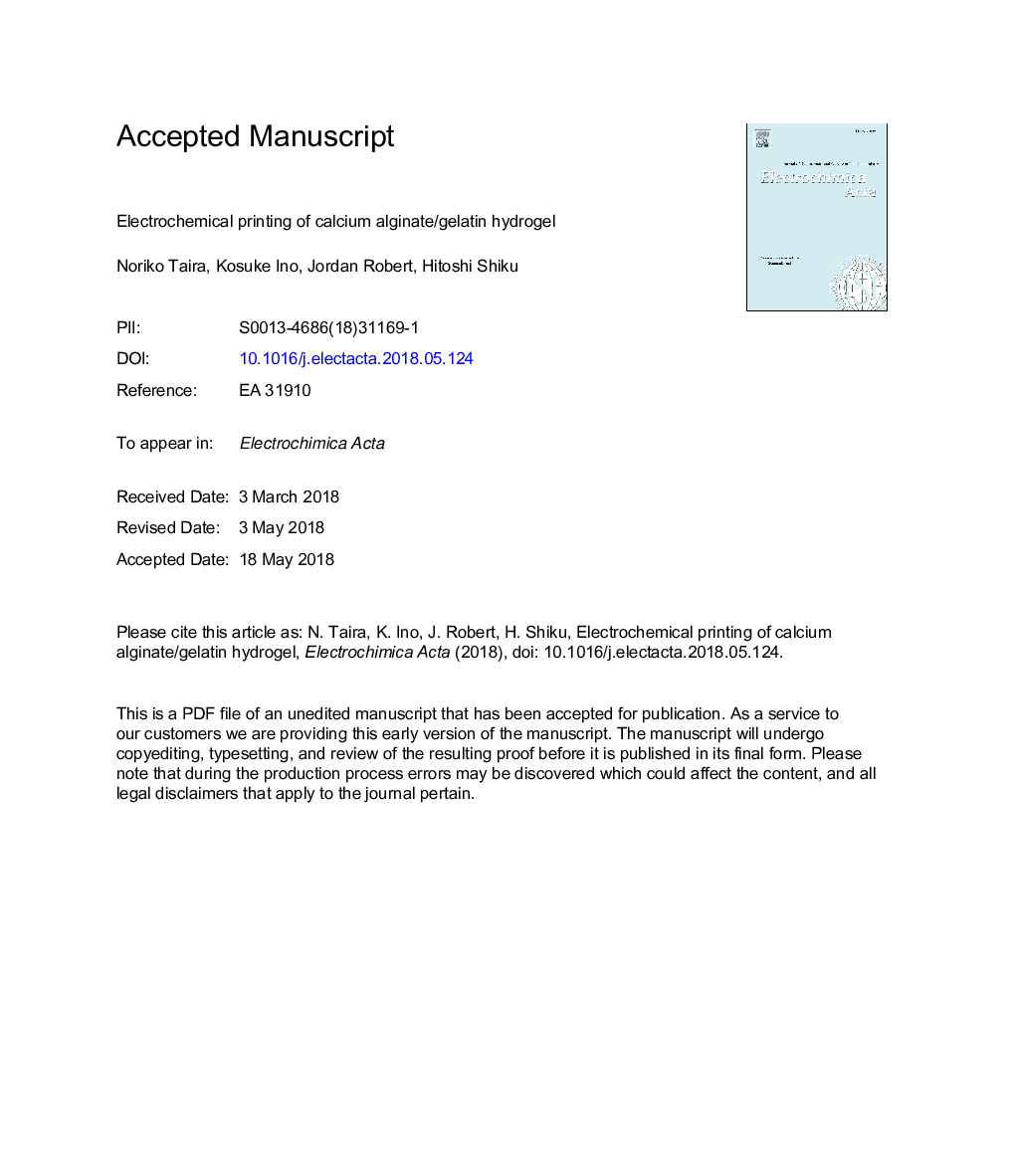| Article ID | Journal | Published Year | Pages | File Type |
|---|---|---|---|---|
| 6602388 | Electrochimica Acta | 2018 | 28 Pages |
Abstract
Here, we report the electrochemical printing of calcium-alginate (Ca-alginate)/gelatin hydrogel. The printing process involves placing an electrode within or above a gelatin hydrogel containing sodium alginate and CaCO3 particles. Owing to acidification resulting from water electrolysis at the electrode, Ca2+ is released from the CaCO3 particles, resulting in the formation of a Ca-alginate hydrogel within the gelatin. By scanning a probe electrode or by placing patterned electrodes in the desired locations, the hydrogel formation reaction could be made to occur at any location, with the formed Ca-alginate hydrogel being trapped within the gelatin, which acted as a supporting scaffold. Upon heating, the untreated gelatin melted, yielding patterned Ca-alginate/gelatin hydrogels. In addition, mammalian cells could be cultured successfully within the hydrogel. Finally, by stacking layers of the patterned hydrogel sequentially, three-dimensional (3D) hydrogel printing could be achieved. This method of electrochemical hydrogel printing has significant potential for use in the construction of 3D tissue organs.
Related Topics
Physical Sciences and Engineering
Chemical Engineering
Chemical Engineering (General)
Authors
Noriko Taira, Kosuke Ino, Jordan Robert, Hitoshi Shiku,
